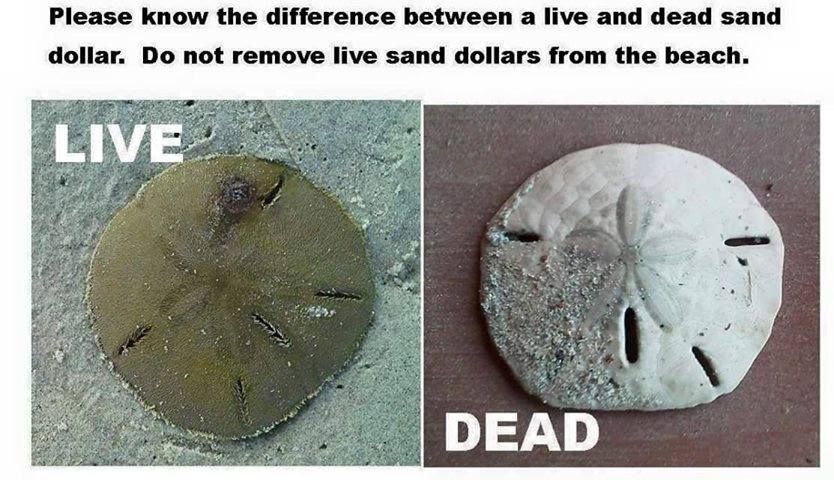Don't Be Cruel: Leave Live Sand Dollars at the Beach
Know the difference between a living and dead sand dollar.

Going to the beach is a traditional family vacation not just in the U.S. but worldwide and walking along the seashore in search of shells and other curiosities is a favorite pastime for beachgoers of all ages. On any given day, you can count dozens of shell-seekers in just one afternoon at Hunting Island Beach.
It’s common to come back home after your trip with a bag full of seashells of all shapes, colors, and sizes as mementos of your summer. Cockles, cones, whelks, tritons, conchs, olives and oyster shells fill the bag together along with a few sand dollars.
But, you need to be sure that those sand dollars weren’t alive when you took them. Take dead sand dollars, yes. Live ones, absolutely not.
It’s illegal in many states to collect living sand dollars for the express purpose of drying them out and using them as decoration, and it’s just plain cruel no matter what the law says. The fine is $500 for taking live sea creatures from South Carolina beaches. Florida and Georgia also have similar laws and some are left up to local municipalities.
Lots of vacationers just don’t know the difference between a live and a dead sand dollar, which is understandable, so here’s an easy explanation:
If a sand dollar is dark in color and half-buried in the sand or water, it’s most likely still alive and you should let it stay in its place in the water. You can also tell if you look for any signs of hairs, fur or velvety skin. Live sand dollars have short spines covered in tiny hairs so they can move along the sand and grasses.
A dead sand dollar is usually only found washed up along the beach and is a light gray to white color, with no hairs that can be seen or felt on it. Sand dollars that have washed up on shore are always most likely dead. These are the ones you want to collect.

There’s your difference. Please remember it when you’re at the beach next.
Also, always be conscious of the number of shells you take, and do your part to preserve the sand dollar population by leaving living creatures in the ocean, or tossing them back if they have accidentally washed up onshore.
Shells provide a diverse swath of environmental functions: they help to stabilize beaches and anchor seagrass; they provide homes for creatures such as hermit crabs and hiding places for small fish; they are used by shorebirds to build nests; and when they break down, they provide nutrients for the organisms living in the sand or for those that build their own shells.
Recent research also points out that seemingly innocent shell collecting may be having an impact on these environmental functions. As tourism increases at a beach, researchers found, the number of shells found there, in turn, decreases. This might lead to a decline in beach health including increased beach erosion, a decline in calcium carbonate from recycled shells and a drop in diversity and abundance of animals and plants that depend on shells, such as crabs, small fishes, algae and seagrass.
All shells are important.
Don’t be ‘that family’ that is seen struggling back from the beach to the car with a sixty-pound beach bag full of shells.
Please be good stewards of our beaches so our children, and their children, can all enjoy the natural beauty we’ve come to take for granted.




